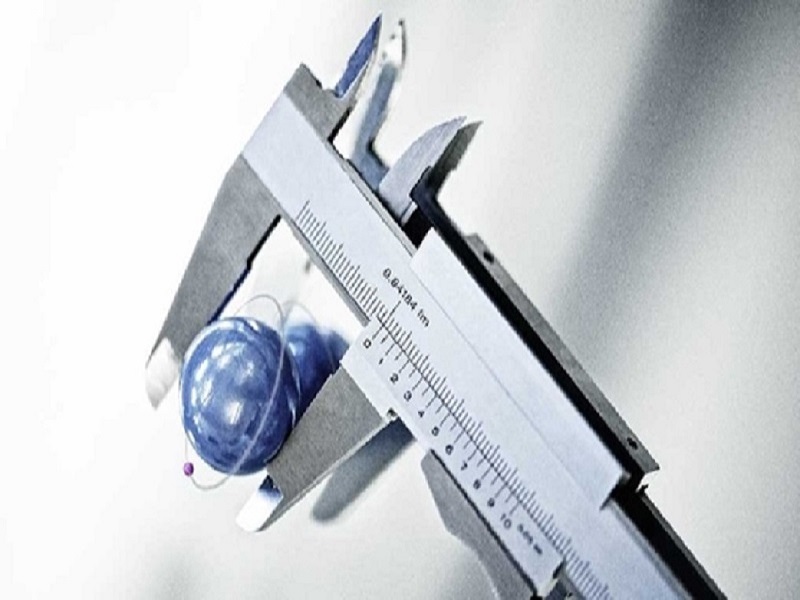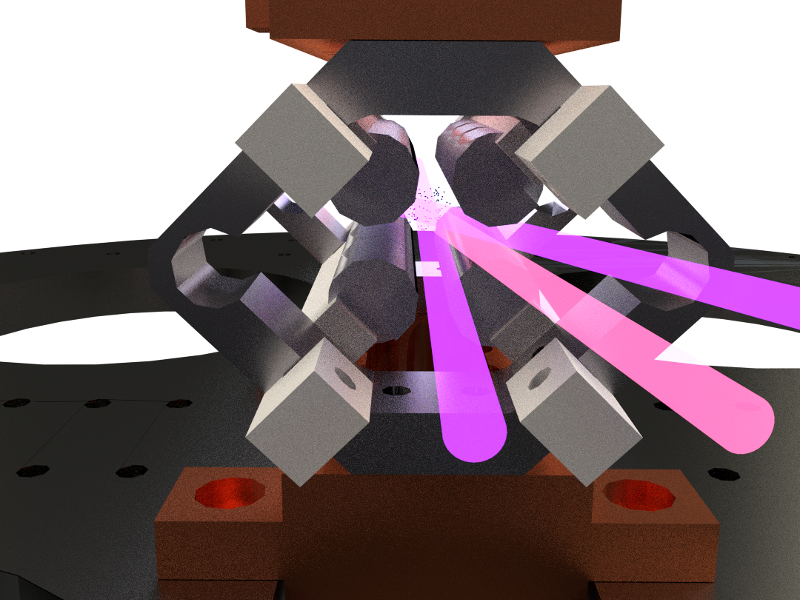Teams working on this topic use advances in atomic physics and laser techniques to measure fundamental constants of physics with high precision and to perform very precise tests of quantum electrodynamics and other fundamental theories.
In the Kastler Brossel Laboratory, such fundamental tests involve/rely on careful studies of atomic and molecular systems. The work of the “Metrology of simple systems and fundamental tests” and the “Trapped ions” teams is part of this tradition.
Research Teams
Metrology of simple systems and fundamental tests
The main research field of the “Metrology of simple systems and fundamental tests” team is the determination of fundamental constants.
The absolute frequency measurements of atomic hydrogen transitions (second best in the world) contribute significantly to more precise determinations of the Rydberg constant, the proton charge radius and the Lamb shifts for Quantum Electrodynamics tests.The measurement of the recoil velocity of an atom induced by the absorption of a photon leads to ultra-precise determination of the fine structure constant. This cold atom experiment combines the techniques of atomic interferometry and Bloch oscillations in an accelerated optical lattice. Studies of highly charged ions and exotic atoms (such as pionic hydrogen) allow testing quantum electrodynamics in strong fields and the strong interaction at low energies, and measuring elementary particle masses.
The latest striking results of the “Metrology of simple systems and fundamental tests” team are:
- The determination of proton charge radius from muonic hydrogen in the framework of the international collaboration CREMA. This result strongly disagrees with the expected one. The large world impact of this work has stimulated an intense theoretical activity, which extends well beyond the atomic physics community. To date, no satisfactory explanation has been proposed.
- Our determination of the fine structure constant with an uncertainty of 7×10-10 combined with the measurement of the anomalous magnetic moment of the electron, resulted in the most precise test of quantum electrodynamics.
Trapped ions
The “Trapped ions” team is developing an experiment using sympathetic cooling of light ions with trapped and laser-cooled Be+ ions to realize accurate measurements on molecular or atomic systems which cannot be directly cooled by laser. The team also has an important theoretical activity in precise calculations for the three-body Coulomb problem.
Doppler-free two-photon vibrational spectroscopy of state-selected H2+ or of HD+ ions offers the possibility to determine the electron to proton mass ratio mp/me.
Sympathetic cooling methods developed for H2+ are used to prepare the cooling of H+ anti-matter ions for the GBAR project at CERN, and highly-charged ions for spectroscopy experiments.
One of the main results of the “Trapped ions” team is the determination of relativistic, radiative and hyperfine structure shifts of H2+ and HD+ at the relative level of 10-11, paving the way to a mp/me determination with a comparable accuracy, which is competitive with the methods based on bound-electron gyromagnetic-factor measurements.
Permanent staff
Metrology of simple systems and fundamental tests :
Permanent staff : François Biraben, Stéphane Boucard, Pierre Cladé, Saïda Guellati, Paul Indelicato, Lucile Julien, François Nez
Trapped ions :


